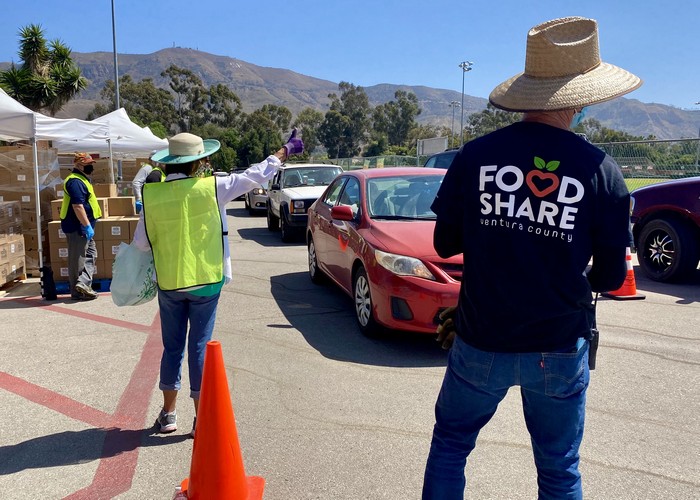Food Share’s capacity to serve is dependent on volunteers.
Food Share, Ventura County’s food bank, is bracing for an expected wave of food insecure individuals as the end of COVID CalFresh benefits becomes reality on March 1. People already struggling with hunger will now have an additional worry – less CalFresh money for groceries.
CalFresh, a federally-funded program, provides monthly food benefits to low-income individuals and families. CalFresh benefits were extended during the pandemic but those extra payments are set to end this month, at a time when high inflation means that wages aren’t keeping pace with rising grocery prices.
According to data from the California Department of Social Services, as of December 2022, more than 41,889 households and 75,163 people currently receive CalFresh benefits in Ventura County, including 27,800 children under 18 and 10,800 adults aged 60 and over.
Commenting on the impact, Monica White, Food Share’s President & CEO, said “There’s no question that this is going to really hit people hard at a time when many are already struggling. We’re bracing for an influx of people. The biggest impact is likely to be to low-income seniors qualifying for the minimum benefit under standard income guidelines. We’re seeing estimates that their monthly CalFresh benefits could drop from $281 to only $23. These cuts really couldn’t have hit at a worse time.”
Inflationary costs are also hitting food banks like Food Share, placing them under increasing pressure to raise more money to meet the increased demand for food that’s now considerably higher in price than it was 18 months ago. The cost of purchasing a case of canned mixed vegetables rose 30% in 2021 vs. 2020, while the cost of purchasing a crate of canned mixed fruit has risen 39% over the same period.
Food Share continues to serve hundreds of thousands of Ventura County residents each year through its network of 190 food pantries, plus multiple weekly emergency food box distributions, which the organization started running at the beginning of the pandemic. “We’ve just surpassed 900 emergency distributions,” commented Monica White. “We started out thinking there’d be a need for just a few months, which turned into three years. Now we’re running them in response to inflationary price hikes and the reduction in CalFresh benefits. It doesn’t appear there’s an end in sight.”
For all the latest information on where to find food, how to volunteer, and how you can support Food Share with a monetary donation visit: www.foodshare.com
Follow Food Share on Facebook, Twitter, Instagram, and YouTube and tag posts #WeFeedVC

